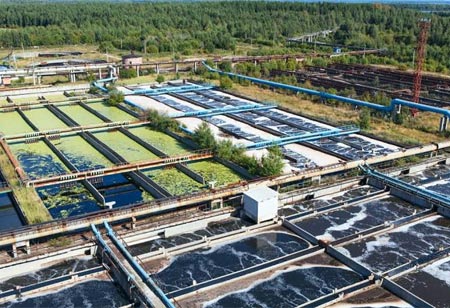Perhaps, one of the most challenging and demanding tasks for researchers, engineers and scientists have been the development of water and wastewater treatment processes to reduce current increase in water pollution, across the globe. Factors such as industrial waste discharge, city sewage, industrial waste disposal practices, agricultural practices, climate change, among others have been the root cause of natural water contamination. With the growing fresh water pollution, it has become critically important to sustain today’s fresh water resources through robust wastewater treatment processes.
One of the processes which utilize eco-friendly and natural approach to decompose various organic substances is Biological wastewater treatment process. This process has its use cases all over the world as it is more economical and effective than most of the chemical and mechanical processes. It is primarily used as a secondary treatment step to eradicate any substance still left after the first treatment. To
name a few, subsurface applications such as activated sludge processes, trickling filters, aerobic/septic tank disposal system, anaerobic digestion and various types of aeration – spray and surface, are used in a biological process to treat wastewater.
Upflow Anaerobic Sludge Blanket Reactor (UASB)
It is a single tank process and treats the wastewater as it flows through the suspended sludge blanket. Some of the advantages of using this process are that it gives high reduction of BOD, withstands high organic and hydraulic loading rates, reduce sludge production, among others.
Membrane Bio Reactor (MBR)
MBR process is very useful in biologically treating the highly contaminated industrial wastewater. It can be further use for purification of municipal or domestic wastewaters. Nitrification and oxidation of organic substances in wastewaters can be effectively done through MBR process.
Moving Bed Biofilm Reactor (MBBR)
If we see Space Constraints, MBBR is the most effective wastewater solution with very less physical spaced required. Hence, it can be a very beneficial for industrial facilities facing space problems. Furthermore, MBBR tanks can become very handy in the situation where facilities require integration of systems to manage wastewater. It is very user-friendly and can be used even by inexperienced operators. Also it works quickly with low hydraulic retention time, while also provides resistant to shock leads.
Activated Sludge Process
Utilizing aeration and biological floc, Activated Sludge Process is used in treating industrial and sewage wastewater. From oxidizing carbonaceous biological matter, to oxidizing nitrogenous matter, this biological process can be utilized for several purposes.
 Magazine
Magazine
